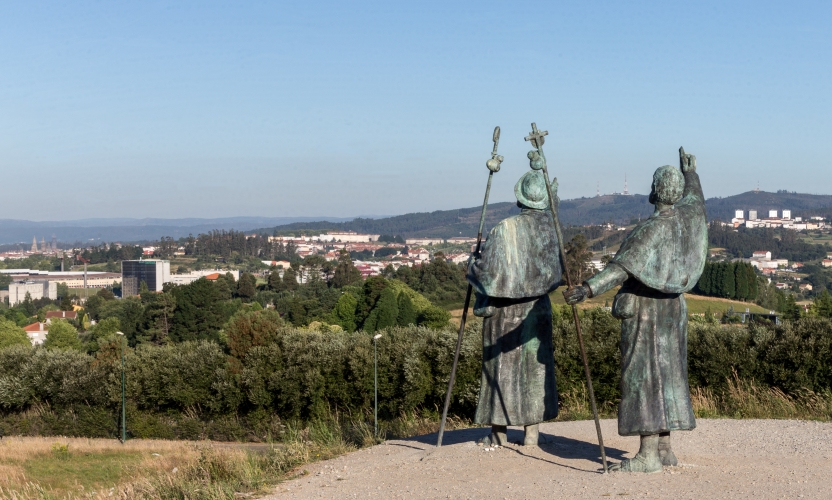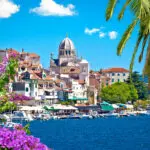Monte do Gozo, or Mount Joy, is a modest hill standing at 380 meters near the end of the Camino Frances. Despite its humble size, it holds great emotional significance for pilgrims. This spot offers a first glimpse of the Cathedral of Santiago de Compostela’s iconic towers, signaling that the journey is nearing its end—just 5 kilometers remain. Pilgrims often describe this as a moment of happiness, joy, or even relief.
Monte do Gozo is where the routes of the Camino del Norte, Camino Frances, and Camino Primitivo meet. Historically, the 12th-century Codex Calixtinus referred to this site in Latin as Mons Gaudii. French pilgrims named it Montjoie. Interestingly, other famous Christian pilgrimage sites, such as Jerusalem, Rome, and Oviedo, also have their own Mons Gaudii, serving a similar purpose. On the Via de la Plata, this spiritual waypoint is called Pico Sacro, situated south of Santiago near Vedra.
Continue reading to learn more about Monte do Gozo. If you would like to walk your own Camino with expert assistance along the way, explore our full selection of Unforgettable Camino Trips.

Historical Value and Artistic Contributions of Monte do Gozo
Historically, Monte do Gozo may have featured a large stone column topped with a cross or a pile of stones echoing the Cruz de Ferro in El Bierzo. In modern times, the site gained prominence when Pope John Paul II celebrated the World Youth Meeting here in 1989, a key event that revitalized interest in the Camino pilgrimage.
In 1992–1993, Brazilian artist Yolanda d’Absburg added a monumental and controversial structure made of ceramic, steel, and stone. The site also features sculptures of two Jacobean pilgrims by Galician sculptor Acuña, installed in 1993 to mark the Holy Year.
Miracles of Monte do Gozo
The Codex Calixtinus recounts a miraculous event from 1080 involving 20 French knights. While on pilgrimage, one knight fell ill and was abandoned by his companions, save for one loyal friend. The Apostle Santiago is said to have miraculously transported both the dead and surviving knights to Monte do Gozo to reunite with their fellows, underscoring the spiritual meaning of pilgrimage.

Emotional Monte do Gozo Accounts from Pilgrims
Monte do Gozo has inspired deeply emotional responses from pilgrims throughout history. A notable example comes from Domenico Laffi, a 17th-century Italian pilgrim, who described his experience with tearful joy:
“We arrived at the summit of the Hill of Joy, from where we could contemplate the city of Santiago in the distance. We fell to our knees and began to chant and sing the Te Deum. But we could not recite more than two or three verses because the tears shed by our eyes did not allow us to speak. Overcome by emotion, we finally resumed our song, and thus, singing, we descended to the city, which is beautiful and large, always under construction.”
Acts of Devotion and Gratitude
Many pilgrims observed traditions of devotion upon reaching Monte do Gozo. Some walked the final 5 kilometers barefoot, while those on horseback would dismount and complete the journey on foot. These gestures symbolized their gratitude and joy for the imminent arrival at Santiago.
Groups of pilgrims often engaged in friendly competition to be the first to reach the summit. Guillaume Manier, an 18th-century traveler, recounted his excitement at being the first in his group to glimpse the cathedral:
“When I saw them, I threw my hat in the air to let my colleagues, who came behind, know that I had seen the bell tower [of the cathedral]. Everyone, when they arrived with me, recognized that I was the king.”
We hope you are ready to begin taking the first steps on your Camino adventure. Browse our Camino Trips to learn more about what could await you.








